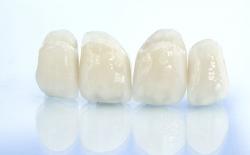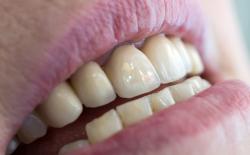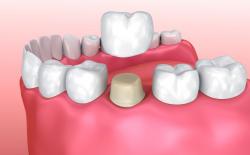What are E-max and zirconia crowns?
E-max crowns are a type of fixed restoration that is made from lithium disilicate, which is a glass-ceramic that is a mix of quartz, lithium dioxide, phosphor dioxide, alumina, potassium oxide, and other components.
This composition of materials allows light to pass through which makes the E-max crowns translucent and look more natural. like the enamel.
On the other hand, zirconia crowns are made of zirconium dioxide, which is a ceramic oxide. Zirconia provides strength and durability, making zirconia crowns one of the most durable restorations.
It also has a porcelain finish that blends well with the appearance of neutral teeth. This is more opaque in color which gives a whitish appearance.
These types of crowns can help with discolored or stained teeth, crooked teeth, chipped or cracked teeth, decayed teeth, old fixed dentures, and altering the shape or form of teeth.
Similarities between zirconia and E-max
- Both materials are biocompatible with all soft and hard tissues.
- Both are a good alternative to traditional porcelain fused to metal (PFM) crowns.
- They are metal-free – no allergic reactions
- Both are white and look quite natural.
- Both are uniquely created to their precise specifications from solid blocks with the use of CAD/CAM technology. This allows a perfect fit.
What are the differences between E-max and zirconia?
There are a few significant differences between zirconia and E-max crowns, which make them ideal for different use cases:
Translucency, esthetics
Since the lithium silicate allows more light to pass through, E-max crowns are more translucent than the zirconia crowns. Being translucent is one key that differentiates E-max from zirconia.
E-max crowns perfectly match the patient’s surrounding natural teeth.
Strength, durability
Zirconia is more resistant to chip and fracture. Zirconia is one of the hardest materials used in dentistry.
Zirconia can take 900-1200 MPa pressure while E-max can withstand up to 500 Mpa.
Lifetime
Thanks to the extra strength, zirconia restorations usually last longer than E-max ones.
Even though this depends on the patient's oral care, zirconia crowns last at least 10-15 years, and E-max crowns usually 5-15 years (or longer with the right care).
Tooth reduction
When preparing the tooth, zirconia crowns might require greater thickness and more aggressive tooth preparation than E-max. E-max follows a more conservative preparation.
When to use E-max and zirconia?
Knowing the differences between E-max and zirconia makes it easier to decide when to use one or the other:
- Since zirconia can withstand more pressure, it is ideal for posterior teeth. Posterior teeth need extra strength since they are used in chewing. The type of zirconia most often used for back tooth restoration is called solid zirconia or monolithic zirconia.
- E-max is recommended for front teeth. These crowns give a more natural look that will match esthetically to the natural teeth. E-max can also be used as veneers, inlays, overlays, or short span bridges in the anterior region.
- People with severely discolored front teeth might prefer zirconia crowns. Since zirconia is not as translucent as E-max, zirconia crowns are better at hiding such discolorations.
- Zirconia crowns for anterior teeth are recommended for people with bruxism. In such cases, layered zirconia is used. This is more translucent and opalescent than other types of zirconia.
Which is a better crown: E-max or zirconia?
In general, E-max crowns are better in the front region and zirconia crowns are the optimal choice for back teeth.
However, this also depends on personal preference and some other factors your dentist should consider:
- Dentists will more likely recommend using zirconia in cases where the patient needs extra strength, like premolar or molar area.
- E-max can be recommended if the patient’s main concern is their esthetics, like cases in canines and incisors.
- People with heavily stained teeth might want to make sure the crown masks the discoloration and hence go for a zirconia crown even in the case of front teeth.
- Grinders or those who like to chew hard food (e.g. raw carrots) might not want to risk the fracture of an E-max crown and choose zirconia.
A brief comparison of E-max and zirconia crowns. Duration: 3:13.
How much do E-max and zirconia crowns cost?
Both E-max and zirconia are more expensive than traditional porcelain fused to metal crowns. However, E-max is slightly more expensive than zirconia.
In the United States, an E-max crown is ranging from $1,100 to $1,600 per unit. Zirconia crowns range from $1,000- $1,500 per unit.
The natural look, a more conservative type of tooth preparation, a metal-free crown, and a crown that has a longevity of 15 years might worth the extra cost.
Need a local dentist?
You might also be interested in:
Zirconia Crowns
Zirconia crowns are getting popular. Great durability, great esthetics, and an acceptable price.
E-max Crowns
E-max crowns are also very popular. Just like zirconia crowns, they look great, are durable, and not cheap...
How Long Do Dental Crowns Last?
While the average lifetime of a crown is 5-15 years, many crowns last a lot longer than that. Learn more about the most important factors that determine the longevity of a dental crown!


